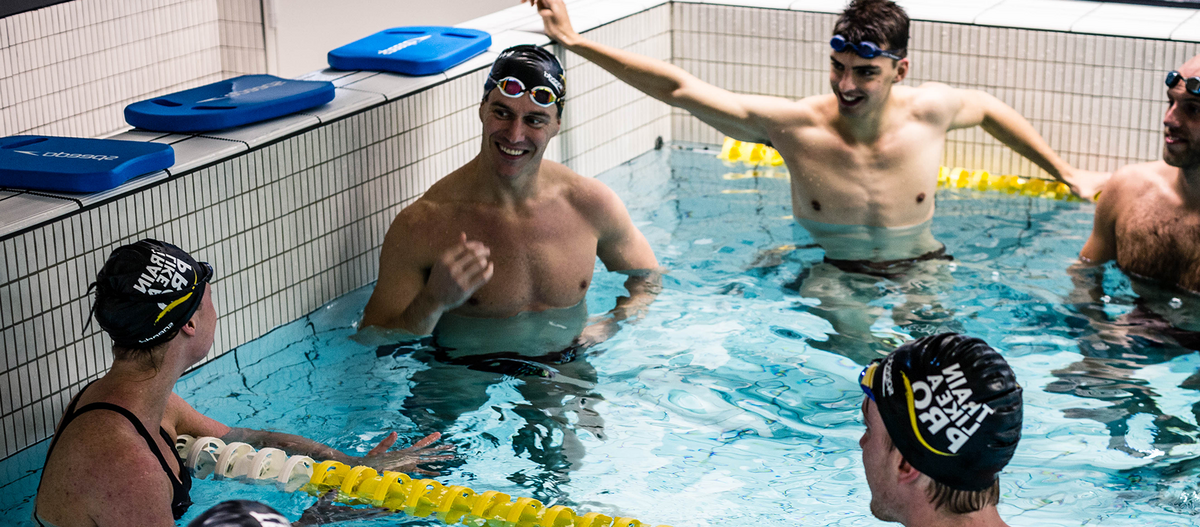Swimming blog - TRAINING Swimming transformation: going from novice to pro level
What makes a pro swimmer a pro swimmer? Or when do you know you've gone from an intermediate swimmer to an advanced swimmer? These are the questions we’re going to answer in this blog and hopefully give you insight into how you can measure your progression in this beautiful sport. Read on and find out what the pro's can do that you can aspire to!
But first a little explanation:
We recognize four swimming skill levels: novice, intermediate, advanced and pro. These skill levels are fluid and intermingling. They are not clearly defined. One can be a novice in one aspect and intermediate in another. For instance, you may be advanced when it comes to breathing, having that under control but be a novice in the catch. So please don’t see this is a black and white progression but a parallel universe of learning skills that will keep growing throughout the journey.
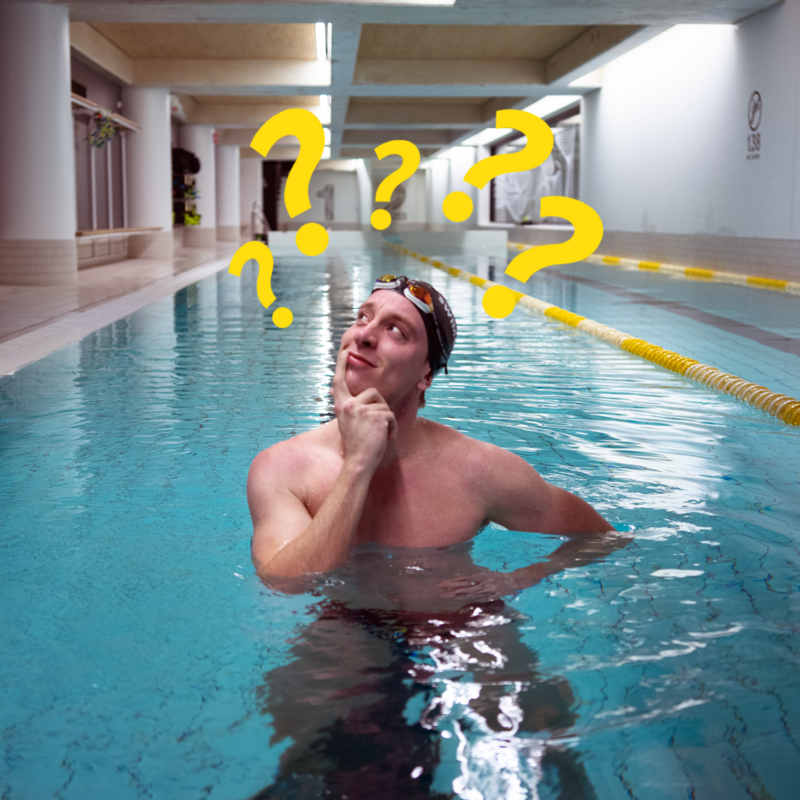
Novice - You can’t apply what you don’t know.
If you are new to the sport of swimming, how can you know that your frantic leg movement is contributing to your breathlessness? Or that lifting your head out of the water is sinking your legs and making it more difficult to swim? You can’t apply what you don’t know, right? You are in all senses ‘clueless’ about swimming, but it's ok. You are probably barely able to swim 200 meter, which makes you a novice. No worries, we all had to start somewhere. Thankfully the learning curve here is steep.
You are typically someone who does not have a swimming background and is learning swimming for the first time as an adult. Your goal in learning to swim is triathlon, an open water charity race, masters races or just because it's a great workout. Not knowing that you don’t know means the gains are quick and visible.
As a novice you will have difficulty with breathing, body position, balance and longer distances. Therefore, the first thing on your agenda is breathing technique. How to, when and how often. See our quick fix blog for the quick fix and be able to swim 25 meters freestyle in no time. You will enjoy swimming much more when you can regulate your breathing and swim further.
Next, you need to learn how to balance your body in the water. Staying flat and balanced is a priority. Not having a fixed point of contact in water means that your body has to continually balance itself. This balancing is done mainly by the core muscles and needs to be practiced. You can learn to balance with drills like the body roll and sidekick.
You will learn to combine technique with swimming longer distances. One is not better than the other, but compliment each other. As a novice swimmer you will spend much more time on technique than swimming meters but that will change. Let’s move on.
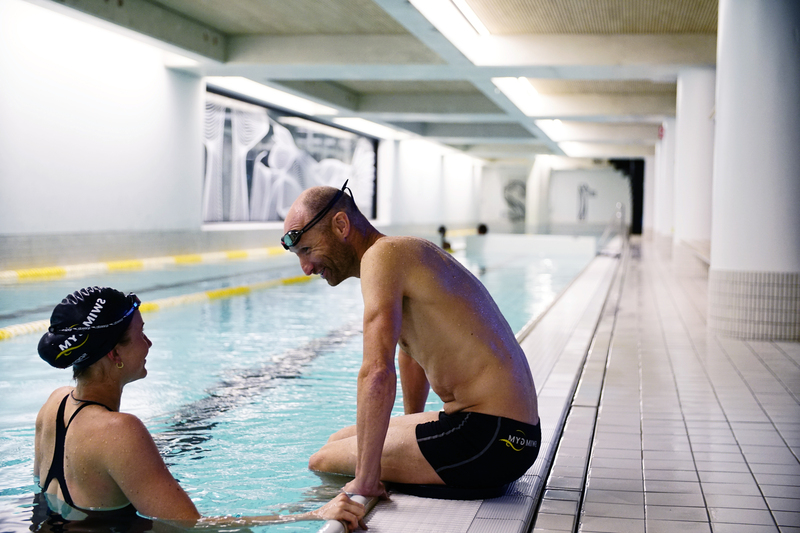
Intermediate – You know what you can’t apply.
As an intermediate you can swim 200-400 meters continuously. You have moved into the zone of knowing what you are doing wrong, but finding it difficult to correct. You are beginning to understand that there is more to swimming than you thought. In the intermediate phase, you will unlearn the old and learn new movements making new neuromuscular pathways.
Your focus is still on freestyle, with the drills becoming more complicated now that your breathing is more under control and you are able to swim longer. Concepts of the catch and recovery are now introduced to help you become a better and more efficient swimmer.
In addition, you will build your endurance by swimming longer than you did as a novice. This will make the swimming engine of the heart and lungs stronger. The transition from a novice to an intermediate swimmer will be hard at first, but eventually you will be able to swim longer distances easier. Swimming more builds your muscles and muscle memory and makes you stronger. We recommend two to three times a week to build strength and fitness and keep your technique sharp. This increased effort builds confidence and helps maintain technical efficiency.
Your journey into swimming is becoming deeper and there is no turning back 😊
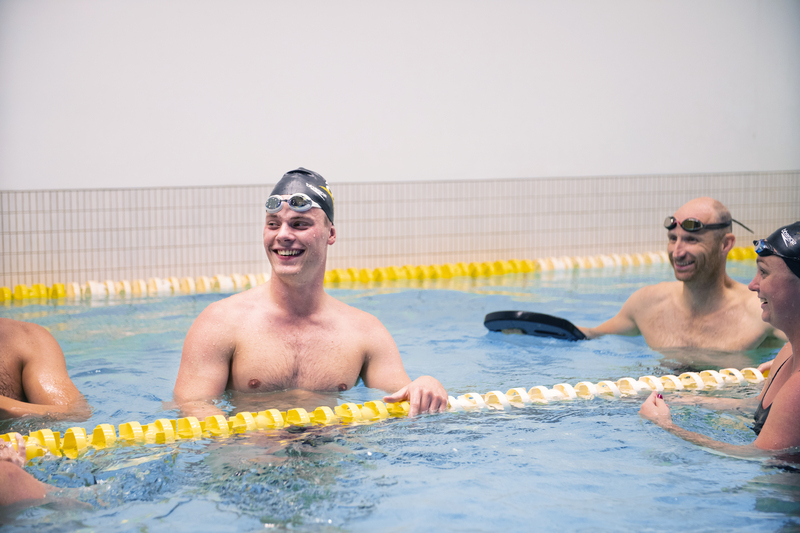
Advanced – You know what you are applying
You can swim more than 400 meters in one go comfortably and breathing is no longer an obstacle. It is all starting to make sense. You know a lot about swimming and are able to control your body in complex movements. Welcome to the advanced stage.
You are knowledgeable in the technique drills and skills of freestyle. You are refining your technique by including drills regularly in your swimming. You take your time when doing these drills as you are aware of their effectiveness in bedding down new skills. For example, you will practice the hinge drill to make sure you have a nice high catch.
A step up from being an intermediate swimmer, is that now you are learning to swim with different intensities. Easy, steady and fast have meaning. You can swim while varying the intensity and speed when needed. You are able to breathe easily with varying breathing intervals and restrictions. You are starting to learn the other strokes and flipturns. The individual medley is spoken about in hushed terms and is seen as the holy grail of the next and last step.
.jpg)
Pro - You have no idea how good you are
You are the master of your swimming world but still, you know it’s complicated and think a lot about what you are doing. You can swim any distance and any stroke comfortably. You can swim underwaters, dolphin kick, flipturns and switch on the power when needed. Swimming comes naturally to you and you don’t have to think about the movements too much anymore.
You have a long background in swimming and probably swam competitively as a child. As a pro you have laughed and cried your way through these levels of skillfulness. You know that your strokes will always be a work in progress and that technique remains a key element to continued gains.
Training like a pro is what has made it all possible!
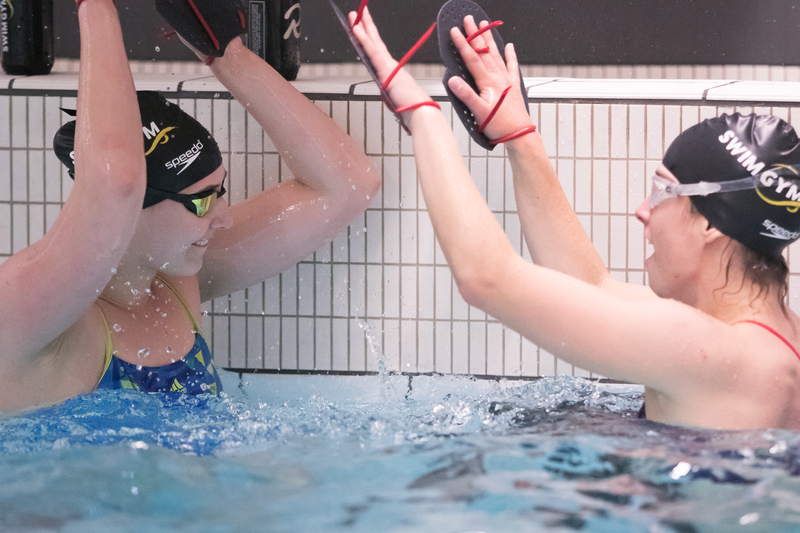
At SwimGym we are perfectly equipped with the knowledge and expertise to help you in every stage of your swimming career, whether it be the most basic or more advanced stages. Go to SwimGym.com if you are interested in training plans and more in-depth information. Moving up the swimming ranks is bloody awesome, trust us.
Written by Michael Stolt
